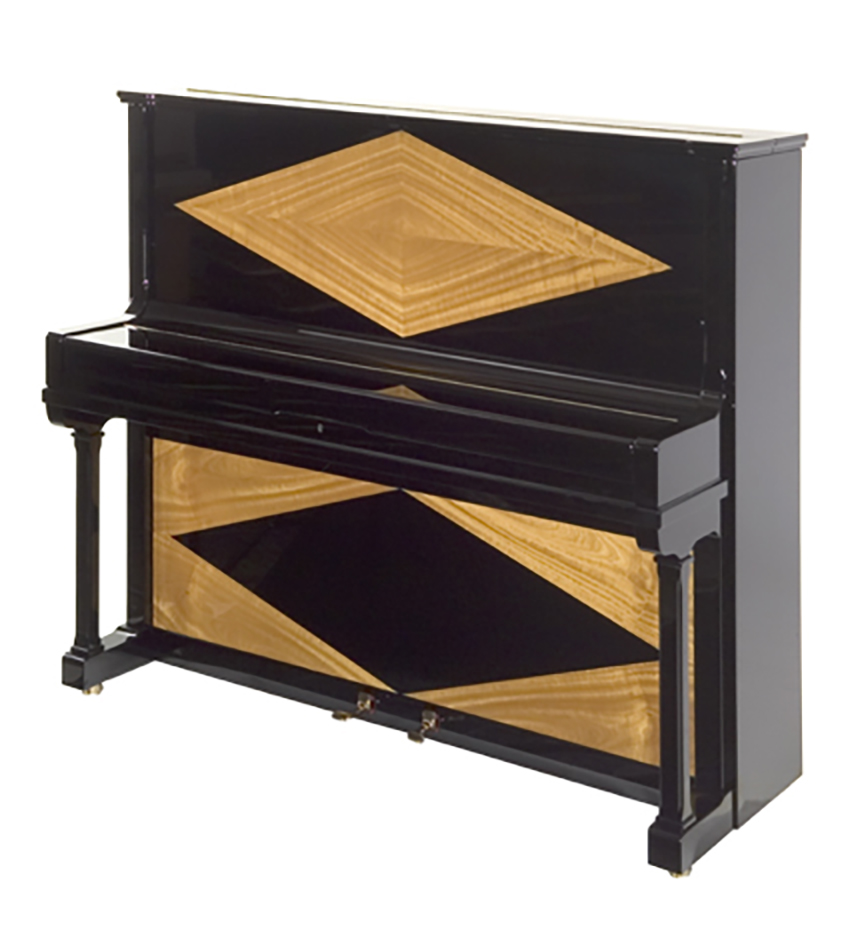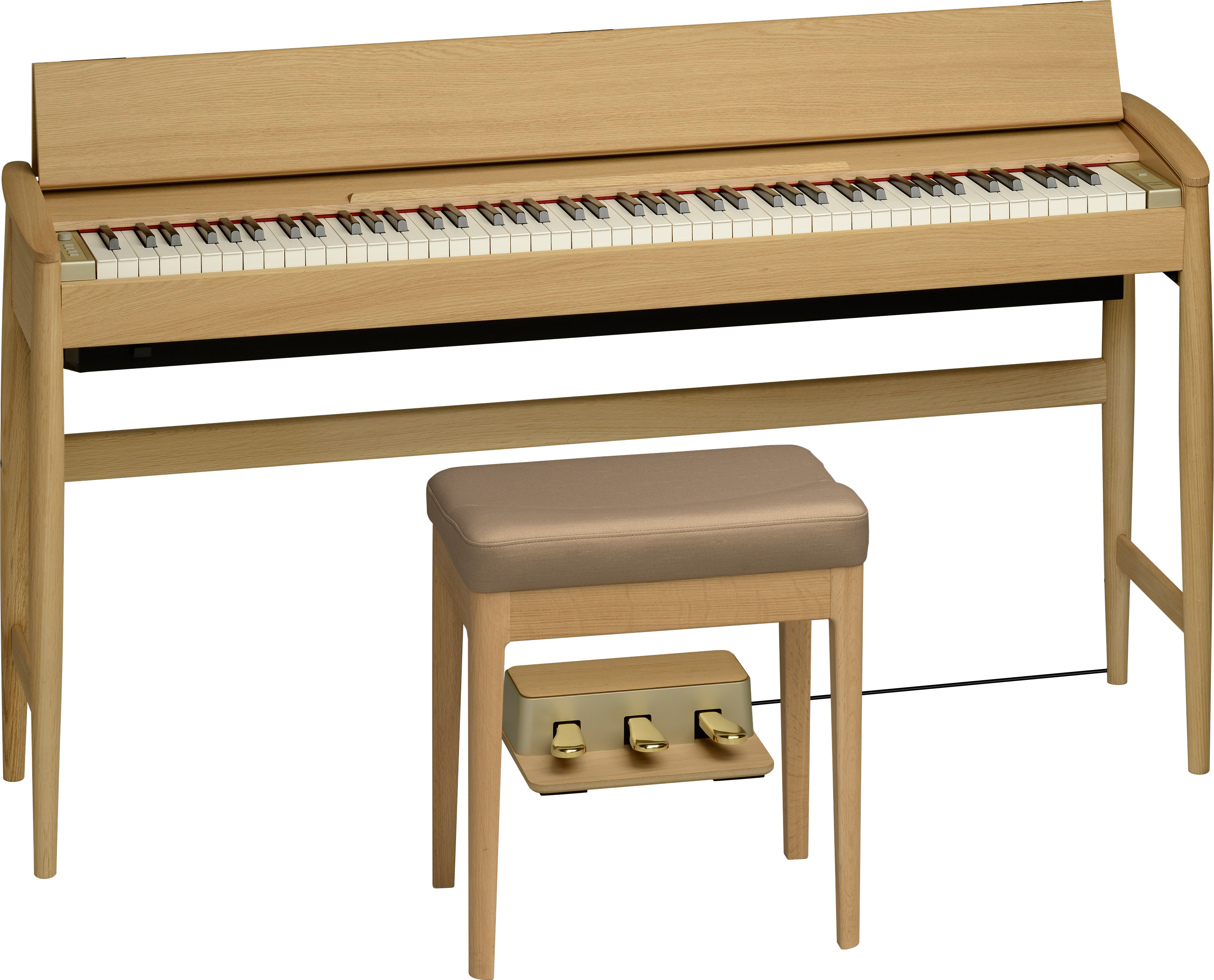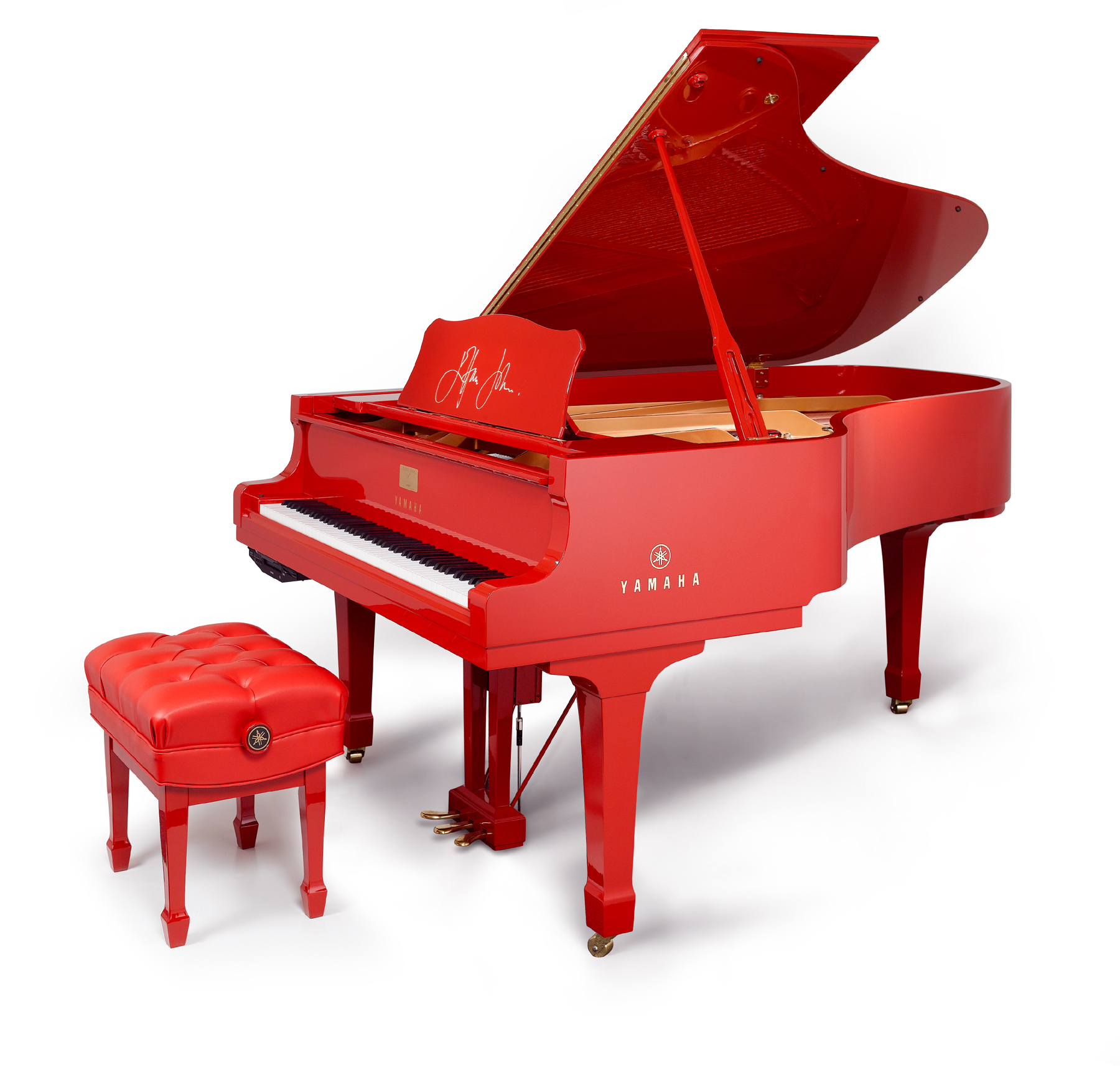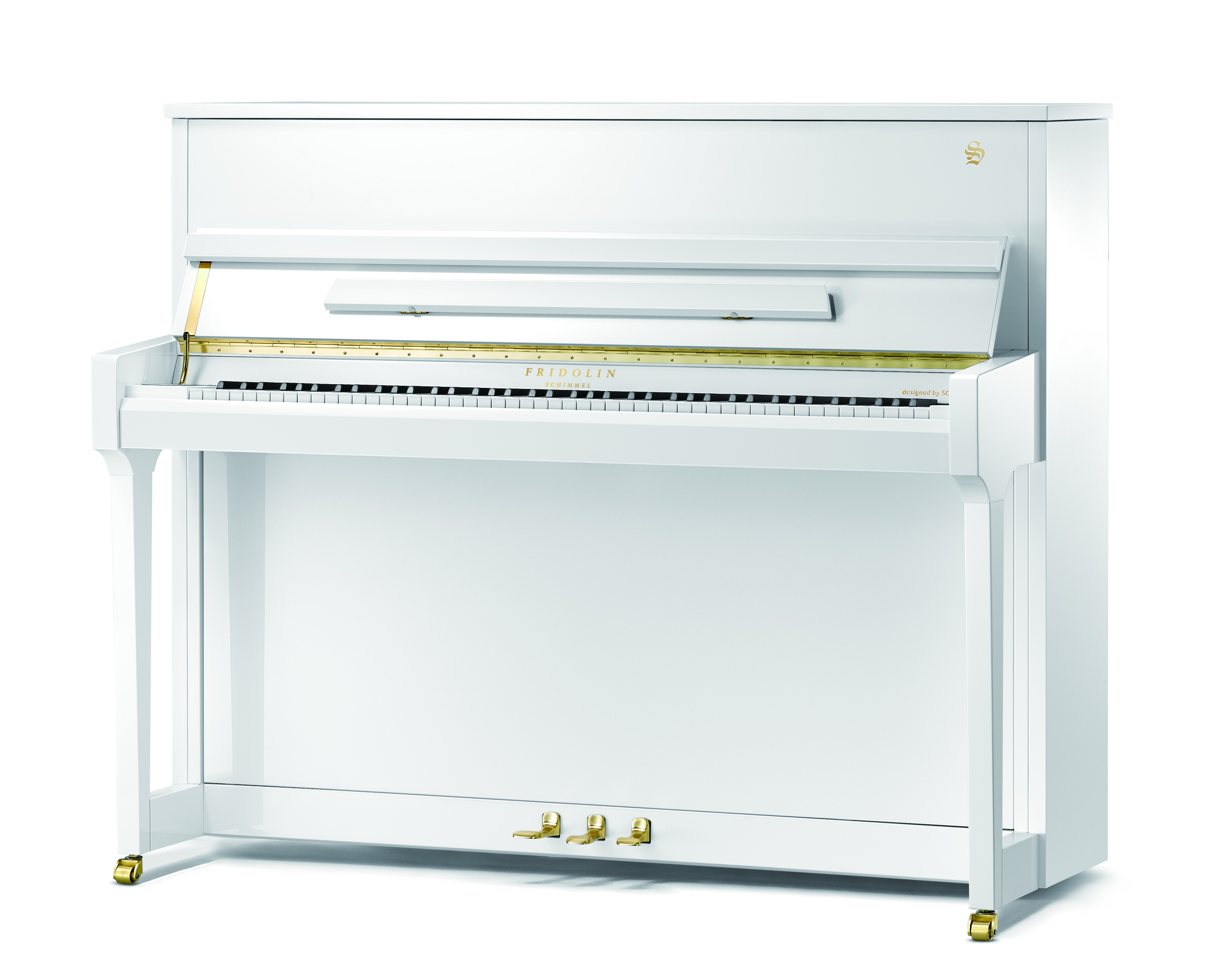The glossy black grand piano might be the king of the concert platform, but what colour and finish will you choose? John Evans discovers some attractive natural wood alternatives that shine just as brightly

Steinway Art Case Piano: Summertime
‘Any customer can have a car painted any colour that he wants, so long as it is black,’ is a phrase attributed to Henry Ford, founder of the eponymous car manufacturer. Wander into a piano showroom today and you may be forgiven for thinking manufacturers have adopted his famous quote as policy, such is the dominance of black polyester uprights and grands. Sleek, glossy, professional-looking – it’s easy to understand the appeal of the instruments in the colour. It’s not a recent thing, either. There have been black pianos since the days of Bartolomeo Cristofori, generally regarded as the inventor of the instrument. In fact, the Metropolitan Museum of Art in New York is home to the oldest of three extant pianos by Cristofori and, guess what, it’s case, lid and legs are black, albeit matt rather than glossy.
Of course, it was still then the age of harpsichords and clavichords. Many were finished in natural wood but more expensive ones were lavishly decorated. Most early pianos adopted the natural wood look. Even premium manufacturers such as Broadwood, Erard, Pleyel and Graf tended to favour the look with attention paid instead to the quality of the woods used and the placement of sections with contrasting grains. The Cobbe Collection at Hatchlands Park near Guildford has some beautiful examples of early pianos including Beethoven’s Graf with its gorgeous natural wood casework. However, among the treasures there is also a piano once loaned to Liszt in around 1875 that is finished in black. Made in Italy by Carlo Ducci, the upright’s only concession to decoration is a couple of ornate candlestick holders and two brass handles on the sides for moving it. It’s important because around the same time, black had become a popular colour associated with Japanese culture and, in particular, East Asian lacquer work. A technique called japanning, designed to mimic the region’s black lacquer, emerged and became popular as a finish for pianos. ‘There was a real vogue for black, highly glossy lacquer,’ says Adam Cox, founder of Cavendish Pianos. ‘Not only was it attractive on a piano but using it meant you didn’t need to have such good figuring [the pattern of the wood grain].’
Not only was the direction and quality of the wood grain no longer an issue but painting it black meant you could use any old piece of wood for your piano case that fell to hand. And so piano makers’ and by extension their customers’ fondness for glossy black pianos took root. However, the natural wood finish wasn’t giving up without a fight. On the concert platform the black grand was, and remains, king but at home other factors such as décor had increasingly to be taken into consideration, which is how natural wood managed to hold its ground.

A model from Steingraeber's Twist & Change range
Natural beauty
‘People understood wood more than they do today,’ says Cox. ‘They would be amazed by a rare cut of rosewood, say, much as we’re amazed by the next new iPhone. Burr walnut had never gone away but made a big comeback in the 1920s. Today, oak is the new, must-have wood, at least in our experience. It goes with what many people have at home. I’d say 90% of our customers arrive expecting to buy a black piano but then when they see our natural wood options, they change their minds!’ It’s not just about appearance. Cox believes a natural wood finish lets out the sound and the ‘flavour’ of a piano, too, while, he says, a polyester finish traps it like a soundproof box. Polyester is also toxic when it’s being worked on (not in its final state, of course). ‘Customers are keen to do the right thing. Of course, price matters but wood sourced locally, a natural finish rather than polyester… These things go hand in glove with music played on an acoustic instrument.’
‘I’d say 90% of our customers arrive expecting to buy a black piano but then when they see our natural wood options, they change their minds!’-Adam Cox, Cavendish Pianos
Cox’s customers may be in the vanguard of a wider movement towards natural wood finishes. At a recent design conference they attended, the staff of Coach House Pianos, with showrooms in London and Swansea, heard that natural wood finishes, as opposed to stained or lacquered, are predicted to become more popular. Stuart Williams, a manager at the firm, says that the dominance of black disguises the fact that there are already many natural finishes available. ‘Polished black is a popular choice but a piano in this finish can be a few hundred pounds more expensive than one in a natural wood finish. It’s worth customers taking the time to explore the alternative finishes piano manufacturers offer today because many are extremely attractive.’
With Coach House’s vast range of brands to call on, Williams is well placed to comment. The pianos of Steingraeber & Sohn, for example, are available not only in ubiquitous black but in a remarkable palette the firm calls Twist & Change – a combination of rare woods occupying one half of the front and upper and lower portions of the piano while behind, the instrument is polished black. It’s attractive and very striking. In addition, the manufacturer offers a choice of more than 100 types of wood – polished, satin or oiled. You can even combine a finish with black or white polished elements.
Another brand with adventurous tastes in wood and also represented by Coach House is Sauter. Satin Cherry Mahogany, Walnut Satin, Macassar Polished, Palisander Polished… There’s even a model with a glass front. Meanwhile, for those with more conservative tastes there’s Beech Bright Satin, Ash Black Satin and a choice of Maple, Peartree, Cherry and Walnut Satin. Frankly, if you want to make a statement musically and aesthetically, Sauter is well worth a look and play.
Also striking out with new colours and textures is Alpange, a France-based manufacturer of digital pianos which Coach House Pianos recently launched to the UK public. Among the new range is an instrument whose case is finished in a natural walnut veneer. The piano itself is quite unlike any you may have seen before but in combination with the gentle wood tones, the digital instrument has somehow been made more natural and a lot more appealing. It’s also offered in an equally attractive grey maple or a deep ash.

Roland Kiyola in Pure Oak
Picture this
Staying with digital pianos, Roland is among a handful of manufacturers that offers a handy tool for visualising its pianos in your house, enabling you to choose the colour that best complements your decor. Yes, black is a safe bet but how much nicer would it be to have your Roland LX-5 piano in Light Oak, for example, or your LX-6 in Dark Rosewood?
To use Roland’s Piano Augmented Reality (AR) feature, choose the model, scan your room with your smartphone, and see a fully 3D piano seamlessly integrated into your environment. Then, customise the angle, colour and finish to align with your personal style, or adjust its placement until it fits with your surroundings. I tried the tool with Roland’s Kiola range of contemporary-looking pianos designed, incidentally with a famous Japanese furniture maker, and the only ones with a natural, as distinct from synthetic, wood veneer finish. The Pure Oak looked a treat in my sitting room.

Elton John's red Yamaha
‘As piano makers, we have to follow interior styles but also consumer tastes and trends,’ explains Geoff Noronha, global strategic product marketing manager at Roland. ‘Tastes in piano colour are actually quite regional. For example, consumers in Eastern Europe tend to favour white finishes, in the US, light oak and dark rosewood and in the UK, matt black over polished black. And then there’s how the piano is to be used. If it’s a portable stage piano, for example, then white is often the preferred choice. In fact, you can get away with bolder colours for keyboards such as red and yellow. I’m not sure they’d suit an acoustic upright or a grand, though!’

Fridolin Schimmel 121 T in white

Roland FP-30X in white
We’ve talked about piano finishes but we mustn’t forget the instrument’s fixtures and fittings – namely, the hinges and pedals. The brass look was and remains very popular but in recent years, chrome has become a popular alternative. It certainly looks fresh and modern and unlike brass, doesn’t dull over time. Incidentally, thinking about the longer term, no matter how careful you are, black polyester will accumulate marks and light scratches that can devalue the piano, while natural wood can fade (the occasional polish using beeswax should help restore the appearance). It’s all worth remembering when deciding whether to go with the black, the brass, the oak, the cherry, the chrome, the mahogany. No one said choosing a piano was simple.
This article appears inside The Definitive Guide to Buying the Ideal Piano and Accessories 2025








